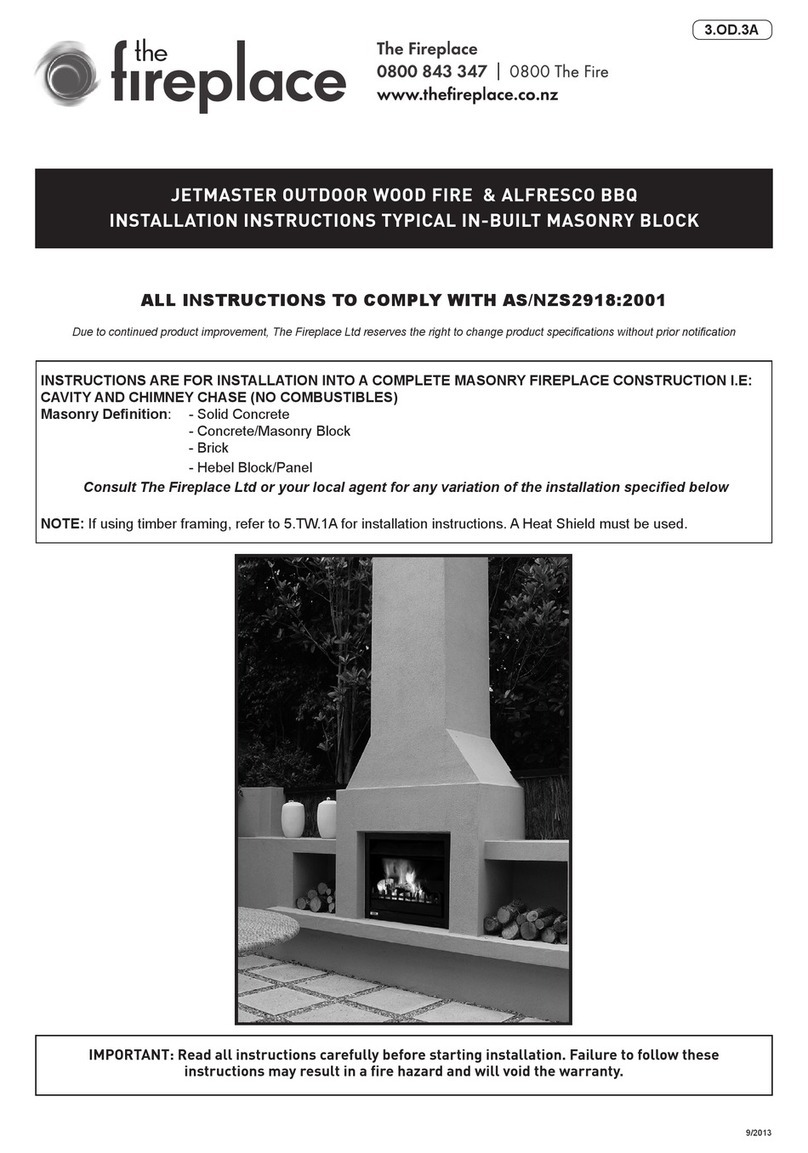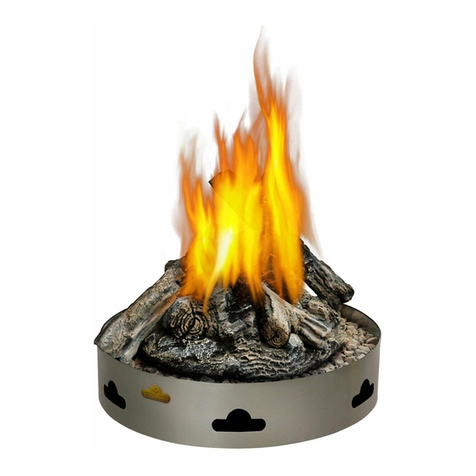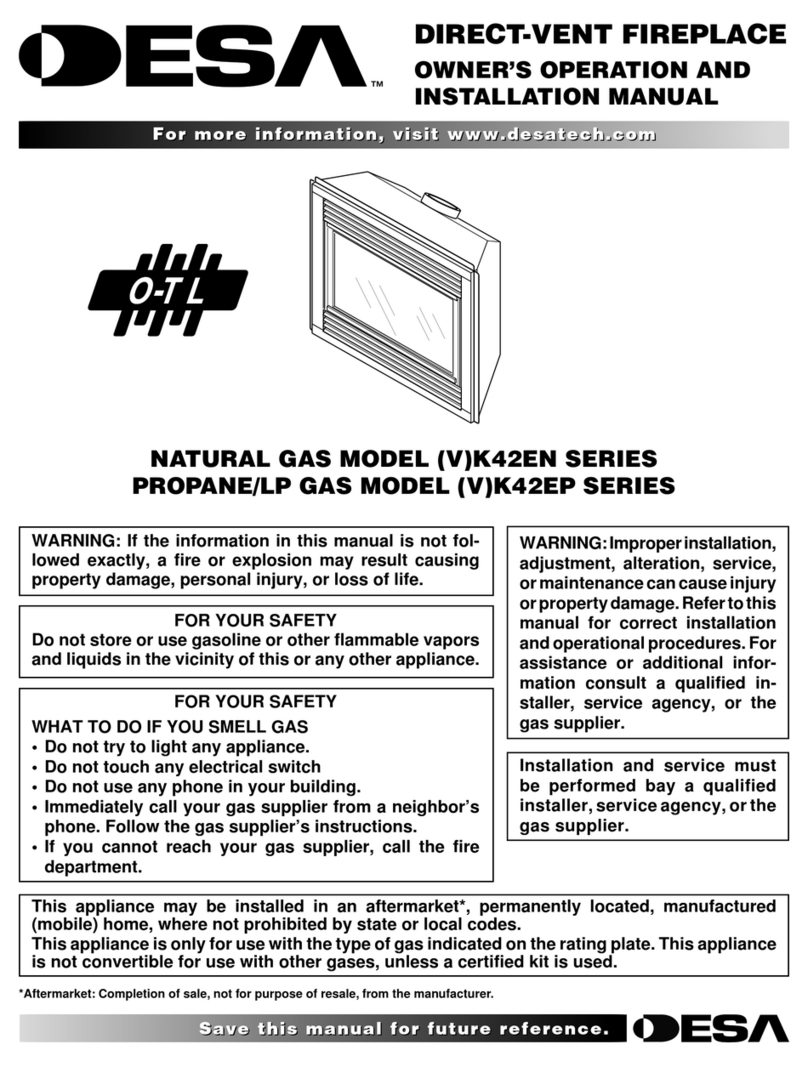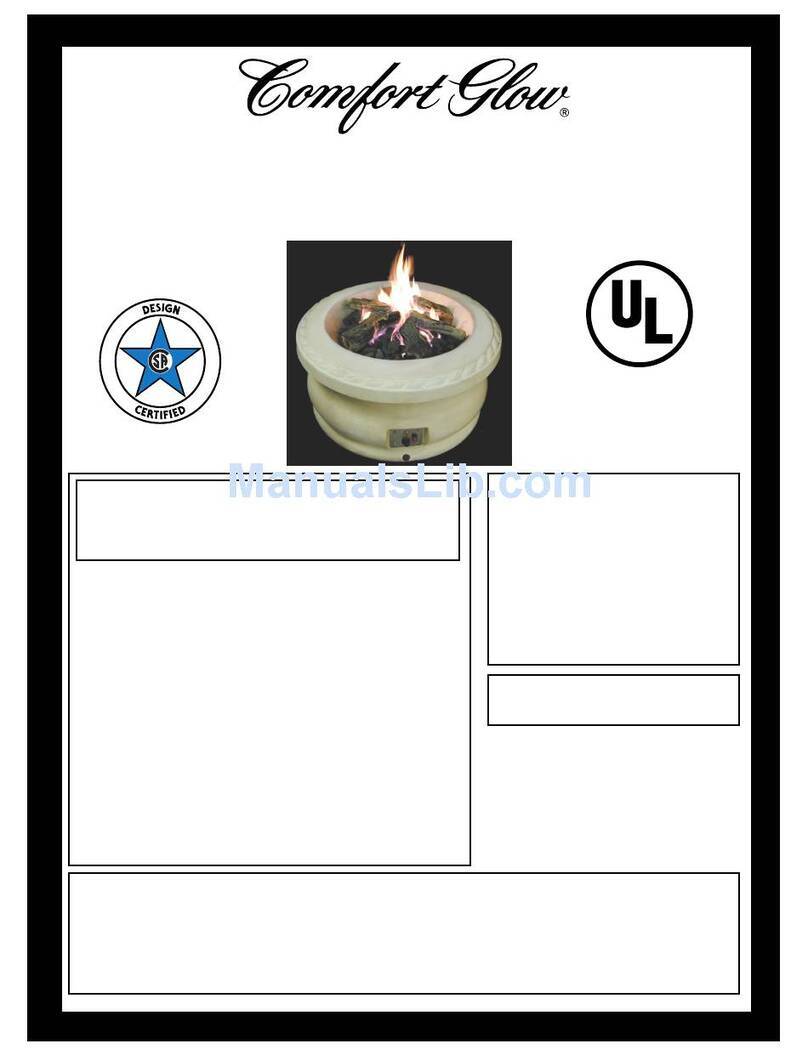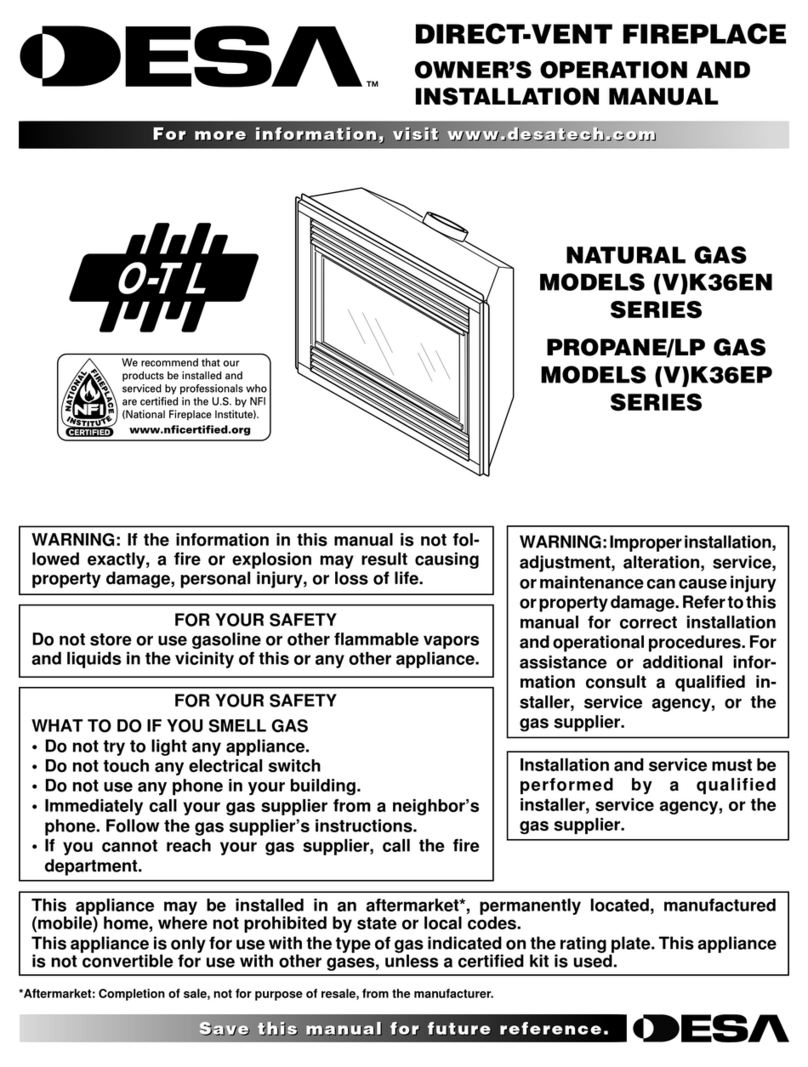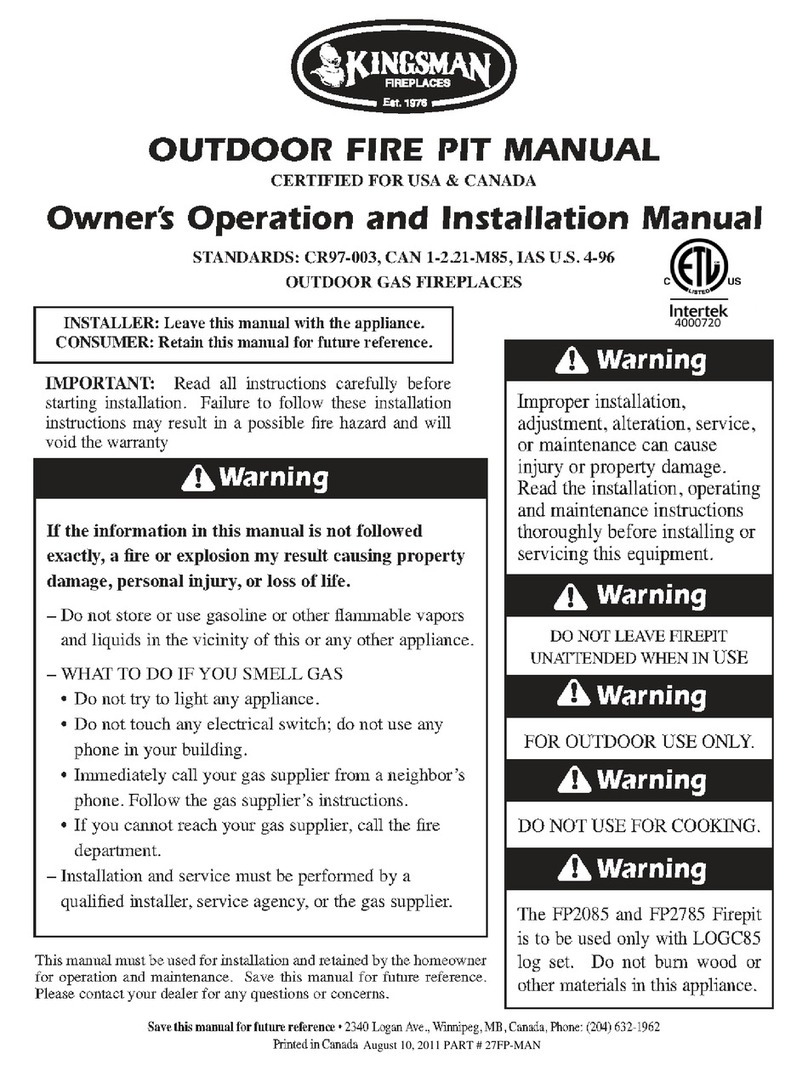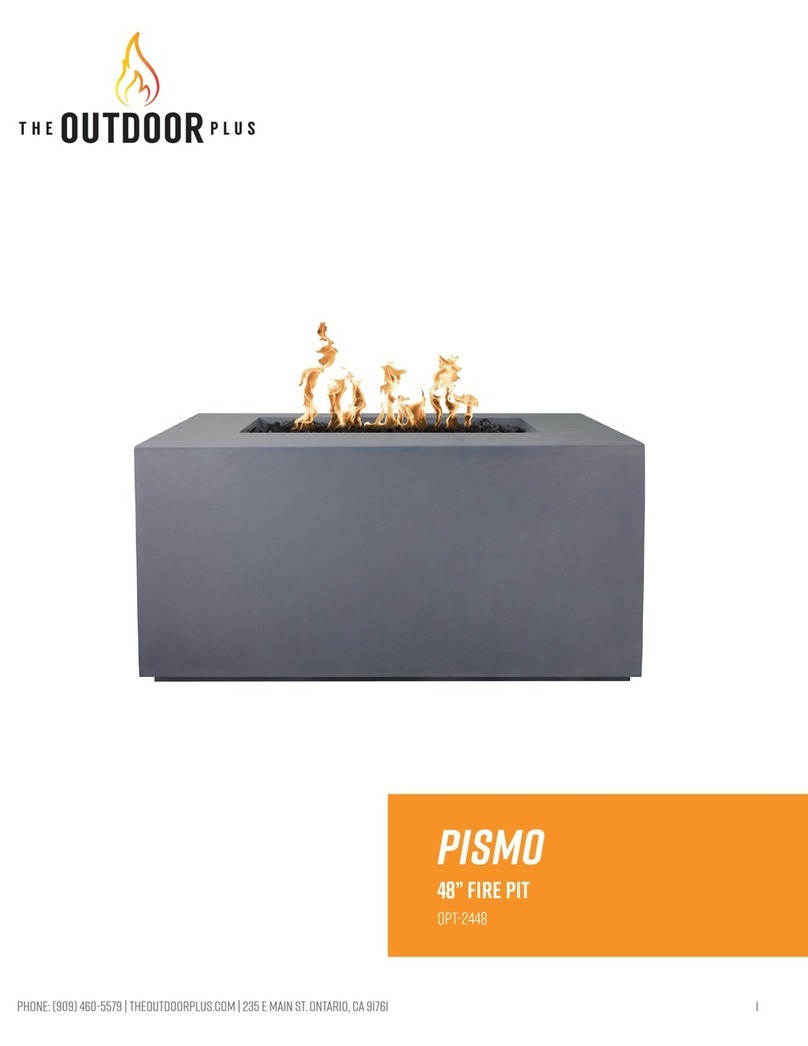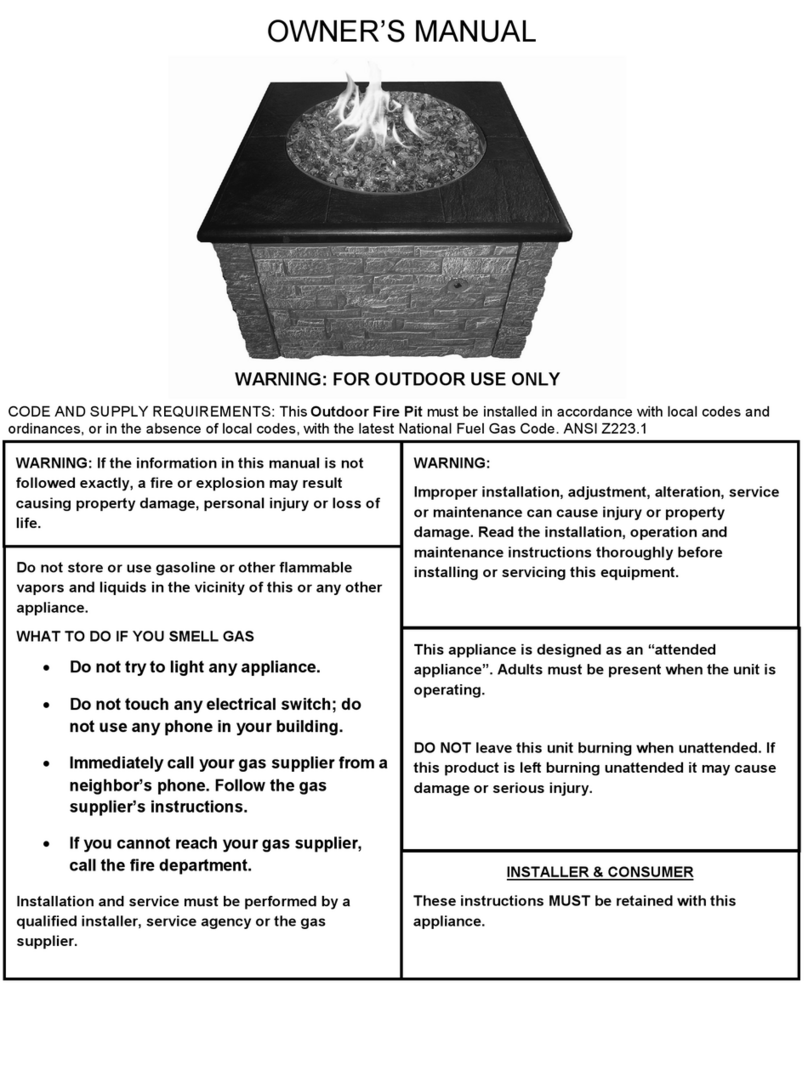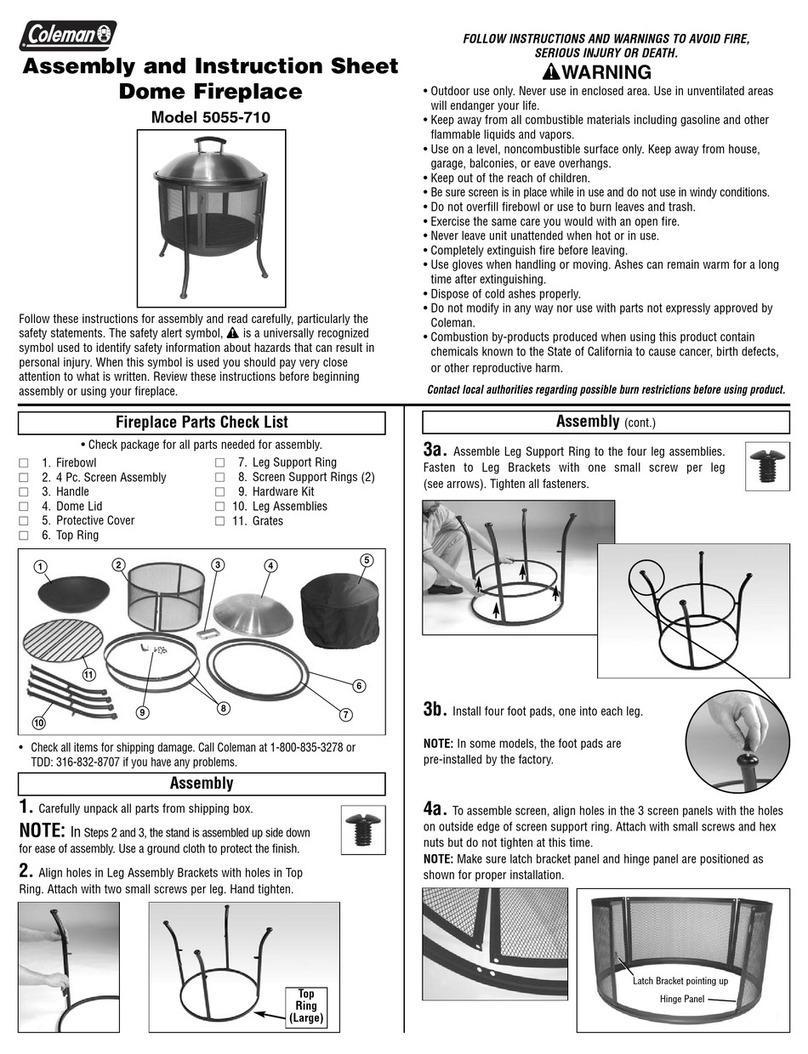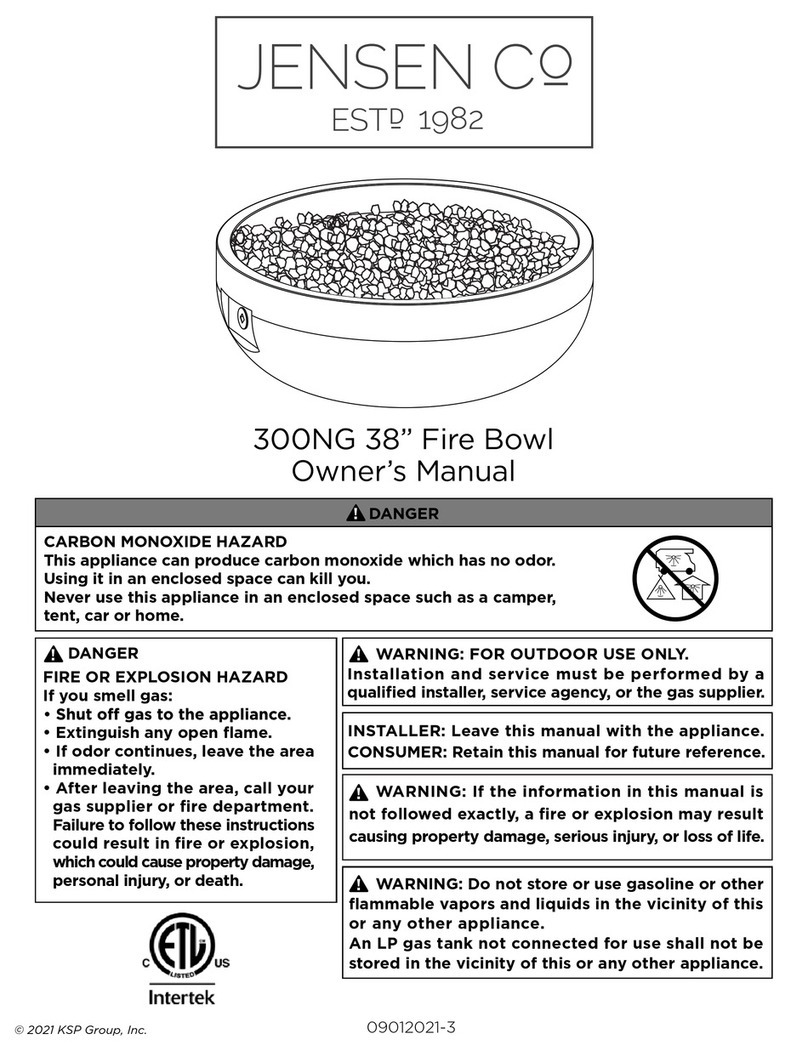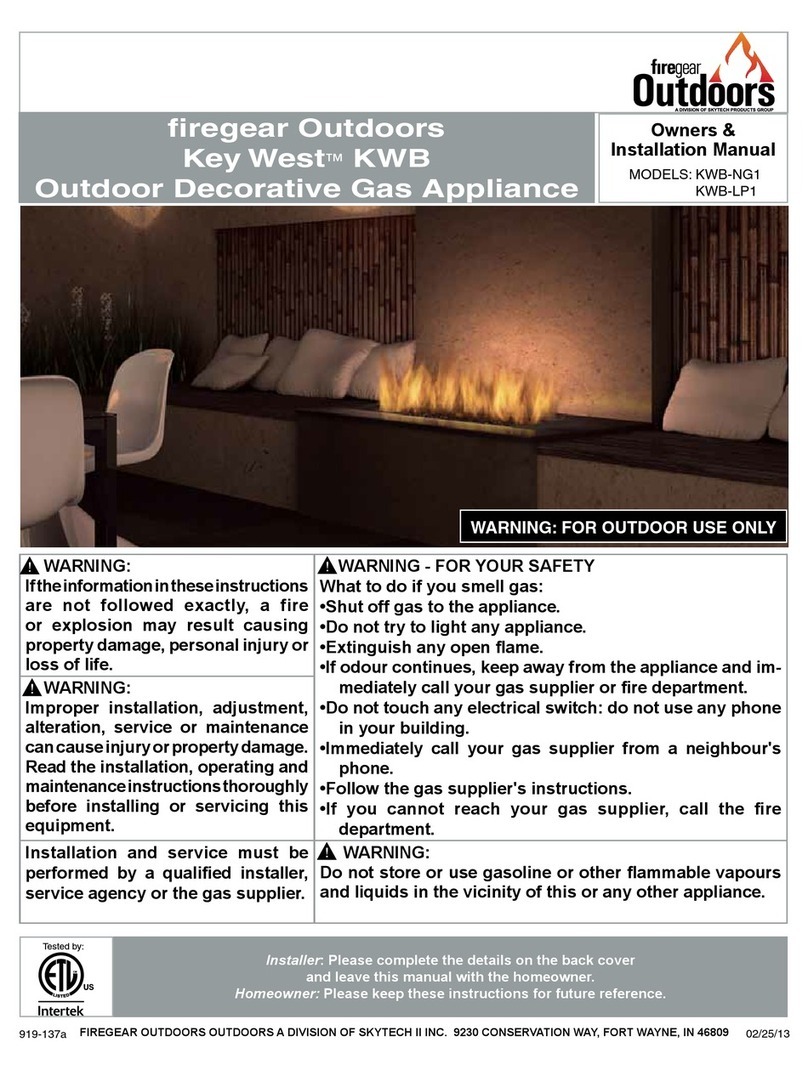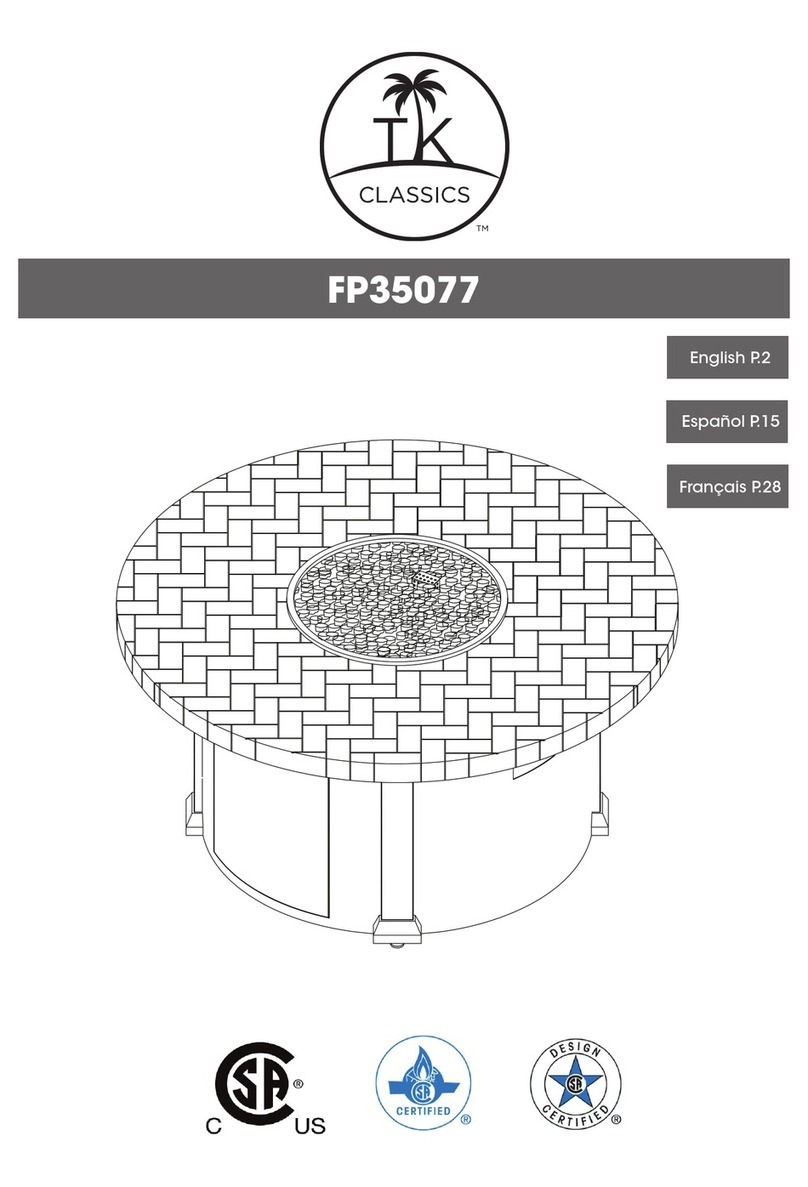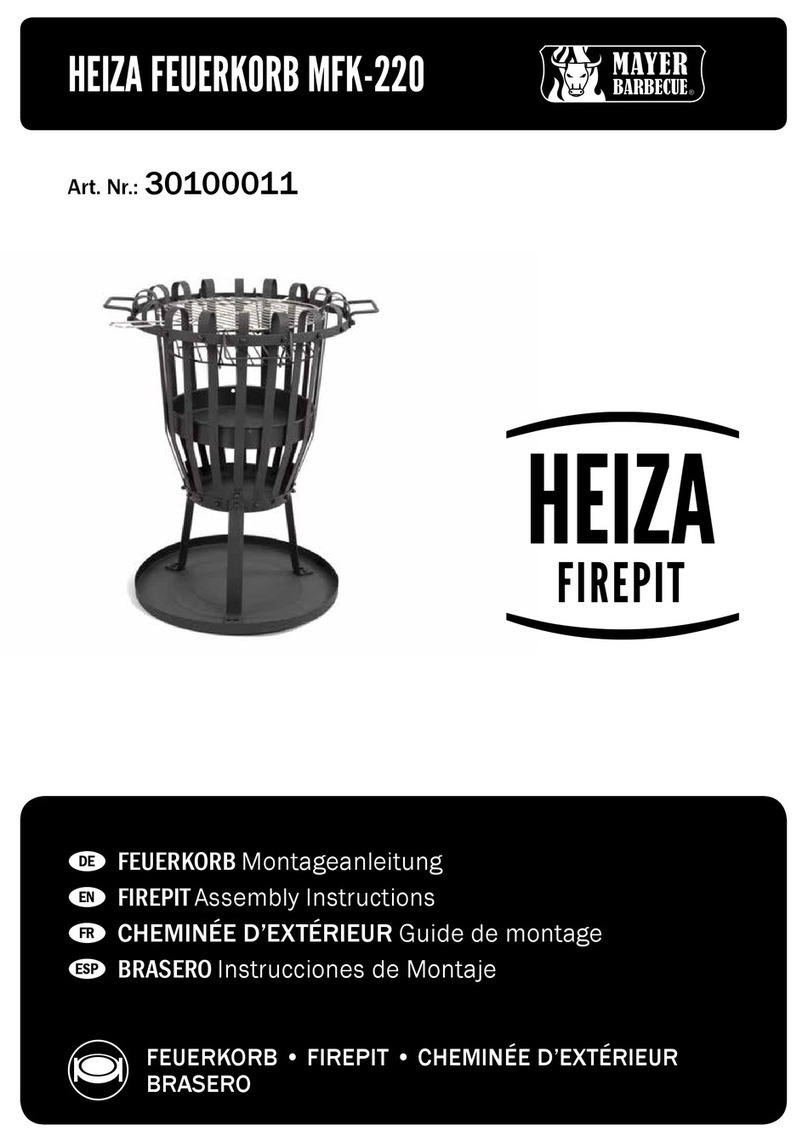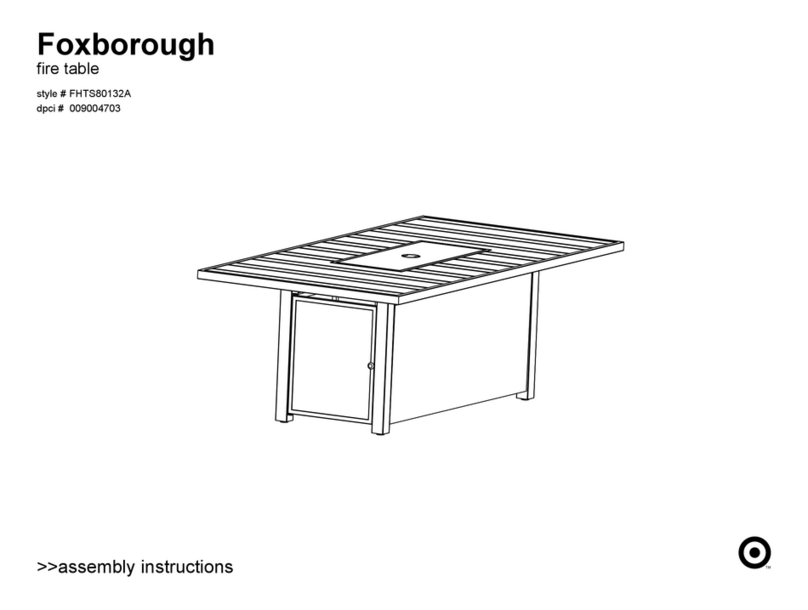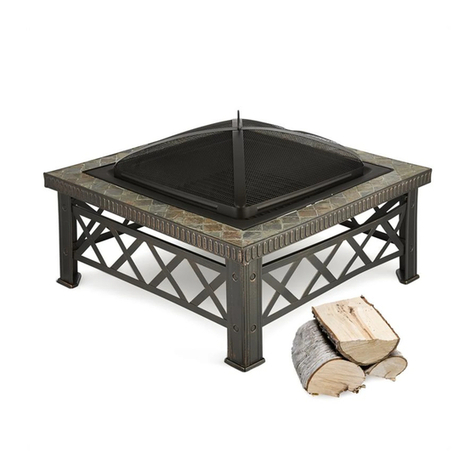www.desatech.com
116192-01G 9
VENTING INSTALLATION
INSTRUCTIONS
NOTICE: Read these instruc-
-
These models are tested and approved for use
with DESA (direct-vent) pipe components and
terminations.
The venting system must terminate on the outside of
the structure and can not be attached to a chimney
or ue system serving a separate solid fuel or gas
burning appliance. A direct-vent appliance must
have its own venting system. DO NOT common
vent this appliance.
These models are approved to be vented either
horizontally through an outside wall or vertically
through a roof or chase enclosure using the fol-
lowing guidelines:
• When venting system terminates horizontally
on an outside wall, you may install a standoff
if the termination cap is to be installed directly
on a combustible nish such as vinyl, wood,
stucco, etc.
• Never run the vent downward as this may
cause excessive temperatures which could
cause a re.
• Vent pipe air space clearances to combustibles
are 1" on all sides except on the horizontal
sections, which requires 2" clearance from
the top of the pipe. Where the termination cap
penetrates a combustible wall, 1" air space
clearance is required.
• Snorkel terminations are required when
minimum clearance to grade cannot be met (see
Figure 16 on page 13).
• Have replace and selected vent components on
hand to help determine the exact measurements
when elbowing or offsetting. Always use wall
restops when penetrating walls and restops
when penetrating ceilings or attic spaces.
• If using a venting conguration of only hori-
zontal venting with no vertical run, a 1/4" rise
for every 12" of run toward the termination is
required.
• For installation of replace at elevations of 4000
feet or greater, pay special attention to venting
requirement recommendations.
WARNING: Read all instruc-
Failure to do so could result in
NOTICE:Failuretofollowthesein-
NOTICE: Do not seal termination
INSTALLATION PRECAUTIONS
• Wear gloves and safety glasses for protection
• Use extreme caution when using ladders or
when on roof tops
• Be aware of electrical wiring locations in walls
and ceilings
The following actions will void the warranty on
your venting system:
• Installation of any damaged venting component
• Unauthorized modication of the venting sys-
tem (Do not cut or alter vent components)
• Installation of any component part not manu-
factured or approved by DESA
• Installation other than as instructed by these
instructions
